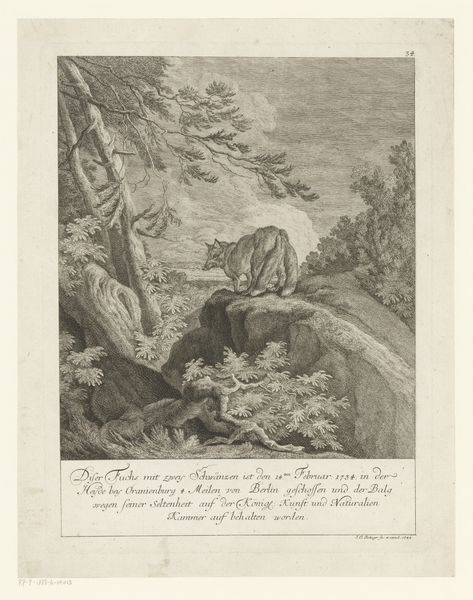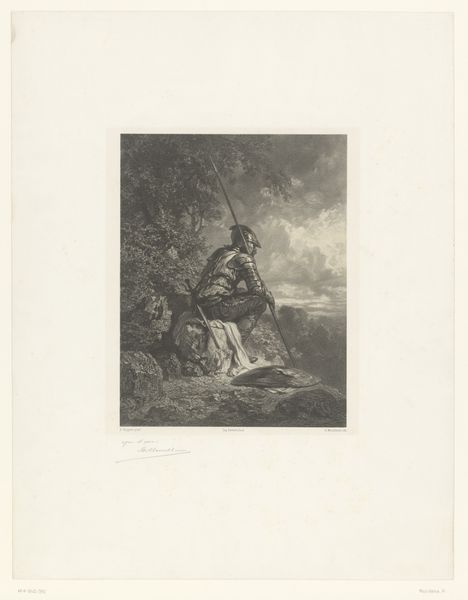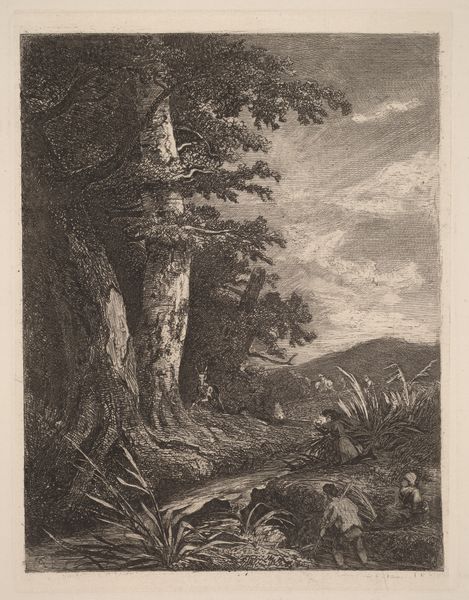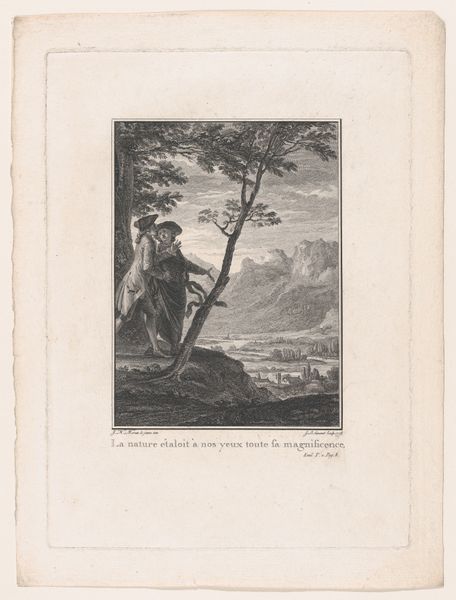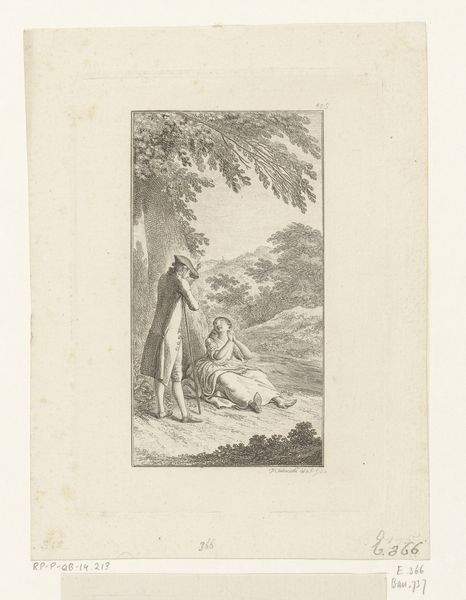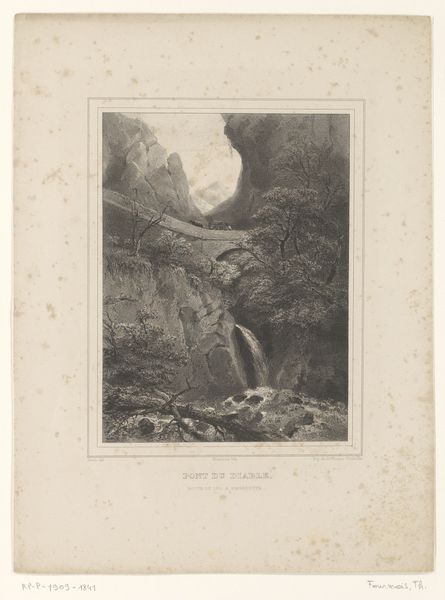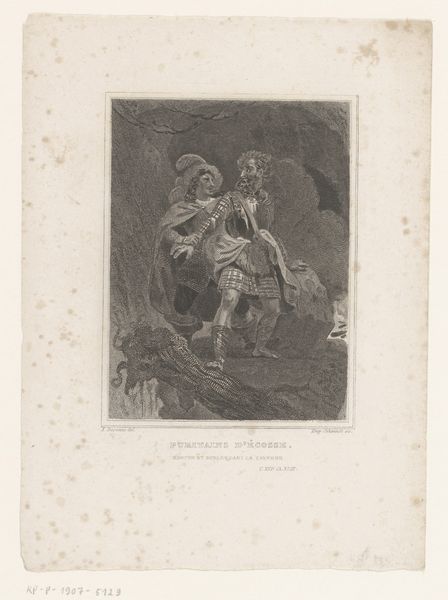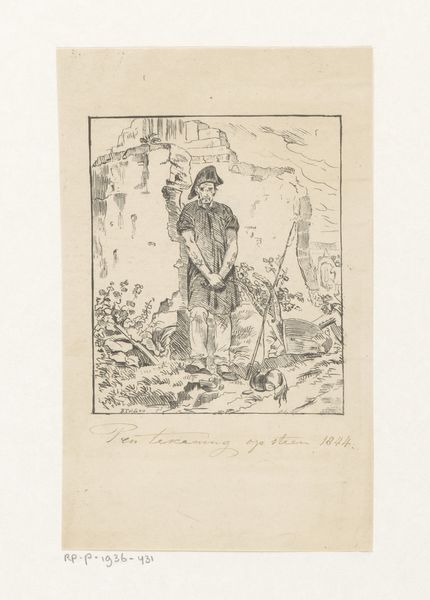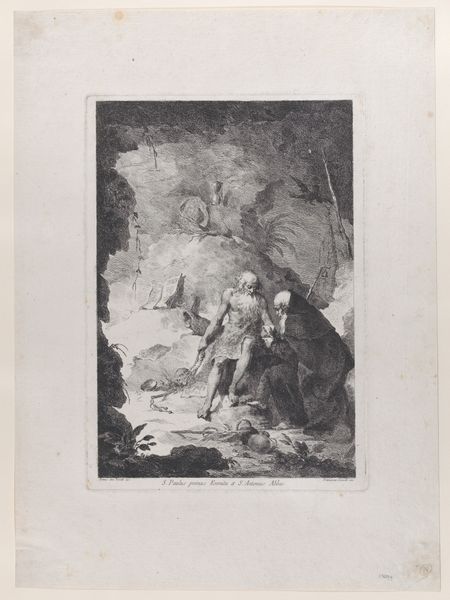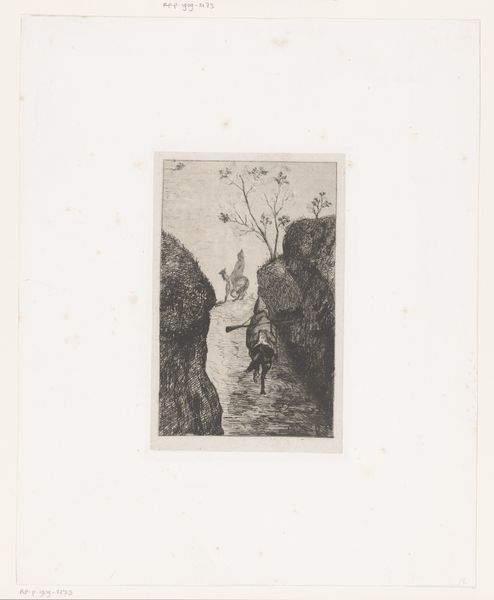
Dimensions: height 272 mm, width 195 mm
Copyright: Rijks Museum: Open Domain
Editor: We're looking at "Man met staf voor een rotswand," or "Man with Staff before a Rock Wall," an engraving by Joseph de Longueil, dating somewhere between 1740 and 1792. The composition is striking; the figure seems almost dwarfed by the scale of the natural landscape. What structural elements define the scene, in your opinion? Curator: The formal arrangement pivots on a pronounced binary. Consider the severe verticality of the cliff face countered by the figure’s orientation, his own implied line of sight extending outward. It presents a powerful visual tension, not just of scale as you noted, but also of directional force. Editor: So it's a conversation between verticals and implied lines of sight? How does that conversation function? Curator: The tension arises from the inherent flatness of the print medium; it is artifice. Yet Longueil exploits shading and line weight to simulate depth, inviting our gaze to penetrate the picture plane. The landscape elements – the rock, the implied path, the frame itself – they organize this penetration, compelling our attention, creating and frustrating a single vanishing point. Observe, also, how the subtle asymmetry of the frame plays into this orchestrated depth. Editor: I hadn't thought of the frame as integral to the depth! I was focused on the figure within, but it's all carefully considered, right down to the textured border. Curator: Precisely. Each structural component is deliberate. What emerges, ultimately, is not just an image but an enactment of perception itself, forcing the eye through a set of calculated paths. Editor: It's fascinating to consider how the composition directs my viewing experience so deliberately. Thank you! Curator: And thank you for that close observation, you've sharpened my perception too.
Comments
No comments
Be the first to comment and join the conversation on the ultimate creative platform.


